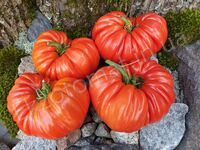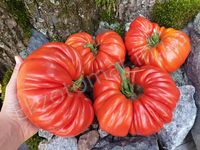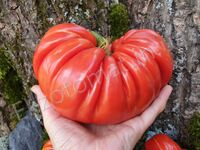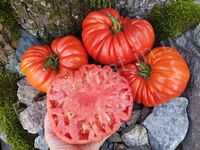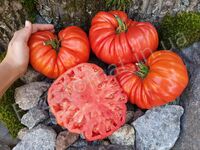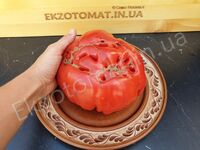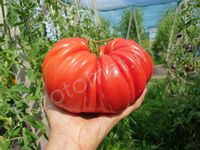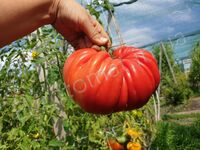Tomato 'Riccio di Parma'
- Availability: Out Of Stock
2 €
PACKAGING: Sachet Zip lock 12 - 15 SEEDS
1. Original Name: Riccio di Parma. Also known as Nostrano and Rosso Grosso in the old times. The name means 'Riccio from Parma'.
2. History: Agronomist Carlo Rognoni (1828-1904, Italy) preserved this old heirloom variety. In 1867, Carlo Rognoni began growing Riccio di Parma in his La Mamiana farm in Panocchia. It was in the Emilia-Romana region in the province of Parma. The variety was named after the province. Carlo Rognoni became famous for growing tomatoes for the food canning industry. Thanks to Carlo and other tomato breeders, we now have an opportunity to grow this wonderful tomato. In the Italian province of Parma, this variety is named as local and is often used in restaurants. Feasts and festivals are also often held to commemorate this old heirloom variety (as well as other heirloom varieties).
3. Plant Specifications: Mid-season. Perfect for growing both outdoors and in a greenhouse. Indeterminate, tall bush, growing up to 6.5 feet (200 cm) tall. Thick stem, regular leaf. Regular truss, 3-4 large fruits per truss.
4. Training Instructions: It is recommended to train the bush to one or two main stems so that the plant could concentrate its energy on the production of larger fruits. Pruning and staking are a must.
5. Shape and Weight: Heavily ribbed beefsteak fruits. Due to their ribs, the fruits are half hollow inside, the walls are very thick and there is little juice. Weight: 14-28 oz. (400-800 g), sometimes up to 35 oz. (1 kg).
6. Color: Bright red, and the flesh is also red in a cut.
7. Flavor Profile: Sweet fruits with a typical tomato flavor. Delicious.
8. Culinary Use: This tomato is an all-purpose one – you can both feast your eyes on it and enjoy your fill. These beautiful large, meaty and ribbed fruits are a true jewel of any garden. They are very tasty both in fresh salads and in different sauces and ketchup. If you have spaghetti you need Riccio di Parma tomatoes as well. You can follow this link to learn more about Riccio di Parma: http://www.pomodororicciodiparma.it/origini/
Tags: Sweet


